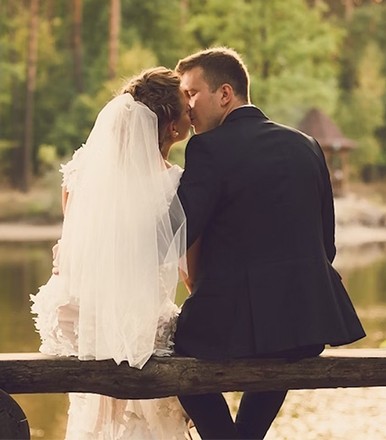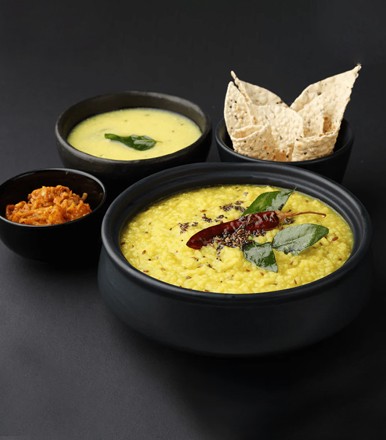Being a ‘one man woman/one woman man’ is such a flex, and luxury in today's time. This article is part of our much-appreciated, relationship series. Our focus this time is on the concept of partnering one person at a time with the intention of forever.
Monogamy, the practice of having one partner at a time, has long been an important concept in cultures worldwide, with its roots entrenched in history, religion, and social norms. In India, a country with rich and diverse traditions, monogamy has evolved over centuries, influenced by religious scriptures, colonial legacies, and modern-day aspirations.
Monogamy is a later concept than polygamy and was the sign of a more evolved and civilized mindset of the society. From the ancient times when polygamy was common to the present-day focus on individual choice and legal frameworks, India's understanding of monogamy has undergone significant transformations. As we move into the future, the question arises: where does monogamy stand in a rapidly changing society?
Monogamy in Ancient India: A Complex Landscape
In ancient India, the concept of marriage was deeply intertwined with religion, caste, and social duties. Hinduism, with its rich array of scriptures, often depicted both monogamous and polygamous relationships, though the ideal of monogamy was acknowledged in several texts, particularly the Manusmriti and the Mahabharata. For instance, Lord Rama, in the Ramayana, is considered the epitome of monogamy, as he remains faithful to his wife, Sita, despite the many trials they face. However, historical records also reflect the prevalence of polygamy among royalty and the elite, where kings married multiple women to consolidate power, create alliances, and produce heirs.
Monogamy, particularly for the common people, was not always the social norm, and multiple marriages or concubinage were accepted in some regions. These practices, however, were never uniform across the subcontinent, as India’s vast cultural, regional, and religious diversity allowed for different interpretations of marriage. In tribal communities, for instance, marriage systems often allowed for varying degrees of polyandry or polygyny.
When Modern Monogamy Took Shape
The British colonial period marked a significant shift in the social and legal fabric of India, including its approach to marriage. The British imposed their own legal frameworks, which were largely influenced by European norms, including the emphasis on monogamous unions. This period saw the introduction of laws such as the Indian Marriage Act of 1872, which reinforced monogamy among Hindus and other religious communities, especially in urban areas. The notion of a legally sanctioned, lifelong partnership between one man and one woman became enshrined in colonial-era statutes, although these laws often clashed with traditional practices.
For Indian women, the colonial era brought a double-edged sword: while some reforms like the Widow Remarriage Act (1856) and The Age of Consent Act (1891) sought to improve their status, the rigid notions of monogamy also meant that women were increasingly seen as bound to a singular, often restrictive marital bond. The Victorian model of family life – centered on sexual propriety, monogamous relationships, and clear gender roles – was, therefore, a key influence on shaping the modern Indian marriage system.
Times Now : Changing Norms and Challenges
Today, India stands at a crossroads when it comes to the institution of marriage. On one hand, monogamy is enshrined in law, and the majority of Indians continue to adhere to the ideal of one partner for life, especially in urban areas. The legal framework, reinforced by the Hindu Marriage Act (1955) and the Special Marriage Act (1954), strongly supports monogamous unions, making polygamy illegal in most cases. Social acceptance of the nuclear family, as opposed to joint families, is also on the rise in urban spaces, signaling a shift towards individualism and private partnership.
However, the realities of contemporary India are more complex. In rural areas and among certain communities, polygamous or polyandrous marriages still occur, often influenced by tradition, economic necessity, or demographic imbalances. For example, in some tribal regions, polyandry is practiced, where a woman may have multiple husbands, often brothers, as a way to limit population growth and maintain family property. Similarly, polygamy, although illegal, persists in some sections of society, particularly among influential men in rural areas.
The New Idea
In cities, however, young Indians are increasingly questioning traditional norms around marriage, with an increasing acceptance of live-in relationships, delayed marriages, and even the possibility of open relationships. The growing trend of personal independence, especially among women, has led to a reevaluation of marriage as a lifelong commitment. Some see marriage as a choice rather than an obligation, with many opting to live together without formalizing their relationship through the institution of marriage.
The rise of the individual in modern India, facilitated by education, economic independence, and exposure to global cultures, is creating a shift in attitudes toward monogamy. While marriage remains a significant institution, there is growing interest in alternative relationship models such as cohabitation, partnerships without children, and even open relationships. The younger generation, more liberal in outlook and increasingly secular, is redefining what it means to be committed to a partner, no longer adhering strictly to traditional marital expectations.
The Path Ahead
As India continues to evolve, the future of monogamy is bound to be shaped by several dynamic factors. For one, the rapid pace of globalization, coupled with advances in technology and communication, is exposing younger Indians to diverse relationship models from across the world. The idea of marriage as a one-size-fits-all institution may no longer hold as it once did, especially in an increasingly cosmopolitan society.
With the growth of online dating apps, changing gender dynamics, and the increasing participation of women in the workforce, romantic relationships are becoming more fluid. Monogamy may still remain the dominant model in legal and cultural contexts, but its manifestation will likely diversify. We may see an increasing acceptance of polyamorous relationships or long-term cohabitations that challenge the traditional notions of legal marriage.
Moreover, shifting attitudes toward LGBTQ+ rights and marriage equality may further influence monogamy's future. As India legalizes same-sex relationships and offers greater recognition to diverse gender identities, the concept of monogamy may expand to accommodate different types of loving relationships.
Finally, as India’s youth becomes more individualistic, focusing on personal happiness and emotional fulfilment, the emphasis on "forever" relationships may evolve into a more flexible understanding of commitment. Whether this will result in the decline of monogamy or its transformation into something more nuanced remains to be seen.
Monogamy, as understood in the context of Indian culture and society, has seen a profound transformation from ancient times through the colonial period to the present day. While the legal and cultural framework supports monogamy as the ideal, evolving social norms, economic shifts, and greater personal autonomy are shaping a new vision of relationships. As India moves forward, the future of monogamy is not about a singular, static definition but a fluid concept that adapts to the changing aspirations of its people, paving the way for new and diverse models of love, commitment, and partnership.














